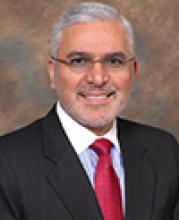Psychiatry is the only medical specialty with a longtime nemesis; it’s called “antipsychiatry,” and it has been active for almost 2 centuries. Although psychiatry has evolved into a major scientific and medical discipline, the century-old primitive stage of psychiatric treatments instigated an antagonism toward psychiatry that persists to the present day.
A recent flurry of books critical of psychiatry is evidence of how the antipsychiatry movement is being propagated by journalists and critics whose views of psychiatry are unflattering despite the abundance of scientific advances that are gradually elucidating the causes and treatments of serious mental disorders.
What are the “wrongdoings” of psychiatry that generate the long-standing protests and assaults? The original “sin” of psychiatry appears to be locking up and “abusing” mentally ill patients in asylums, which 2 centuries ago was considered a humane advance to save seriously disabled patients from homelessness, persecution, neglect, victimization, or imprisonment. The deteriorating conditions of “lunatic” asylums in the 19th and 20th centuries were blamed on psychiatry, not the poor funding of such institutions in an era of almost complete ignorance about the medical basis of mental illness. Other perceived misdeeds of psychiatry include:
- Medicalizing madness (contradicting the archaic notion that psychosis is a type of behavior, not an illness)
- Drastic measures to control severe mental illness in the pre-pharmacotherapy era, including excessive use of electroconvulsive therapy (ECT), performing lobotomies, or resecting various body parts
- Use of physical and/or chemical restraints for violent or actively suicidal patients
- Serious or intolerable side effects of some antipsychotic medications
- Labeling slaves’ healthy desire to escape from their masters in the 19th century as an illness (“drapetomania”)
- Regarding psychoanalysis as unscientific and even harmful
- Labeling homosexuality as a mental disorder until American Psychiatric Association members voted it out of DSM-II in 1973
- The arbitrariness of psychiatric diagnoses based on committee-consensus criteria rather than valid and objective scientific evidence and the lack of biomarkers (this is a legitimate complaint but many physiological tests are being developed)
- Psychoactive drugs allegedly are used to control children (antipsychiatry tends to minimize the existence of serious mental illness among children, although childhood physical diseases are readily accepted)
- Psychiatry is a pseudoscience that pathologizes normal variations of human behaviors, thoughts, or emotions
- Psychiatrists are complicit with drug companies and employ drugs of dubious efficacy (eg, antidepressants) or safety (eg, antipsychotics).
Most of the above reasons are exaggerations or attributed to psychiatry during an era of primitive understanding of psychiatric brain disorders. Harmful interventions such as frontal lobotomy—for which its neurosurgeon inventor received the 1949 Nobel Prize in Medicine—were a product of a desperate time when no effective and safe treatments were available. Although regarded as an effective treatment for mood disorders, ECT certainly was abused many decades ago when it was used (without anesthesia) in patients who were unlikely to benefit from it.
David Cooper1 coined the term “antipsychiatry” in 1967. Years before him, Michel Foucault propagated a paradigm shift that regarded delusions not as madness or illness, but as a behavioral variant or an “anomaly of judgment.”2 That antimedicalization movement was supported by the First Church of Christ, Scientist, the legal system, and even the then-new specialty of neurology, plus social workers and “reformers” who criticized mental hospitals for failing to conduct scientific investigations.3
Formerly institutionalized patients such as Clifford Beers4 demanded improvements in shabby state hospital conditions more than a century ago and generated antipsychiatry sentiments in other formerly institutionalized persons. Such antipathy was exacerbated by bizarre psychiatrists such as Henry Cotton at Trenton State Hospital in New Jersey, who advocated that removing various body parts (killing or disfiguring patients) improved mental health.5
Other ardent antipsychiatrists included French playwright and former asylum patient Antonin Artaud in the 1920s and psychoanalysts Jacques Lacan and Erich Fromm, who authored antipsychiatry writings from a “secular-humanistic” viewpoint. ECT use in the 1930s and frontal leucotomy in the 1940s understandably intensified fear toward psychiatric therapies. When antipsychotic medications were discovered in the 1950s (eventually helping to shut down most asylums), these medications’ neurologic side effects (dystonia, akathisia, parkinsonism, and tardive dyskinesia) prompted another outcry by antipsychiatry groups, although there was no better alternative to control psychosis.
In the 1950s, a right-wing antipsychiatry movement regarded psychiatry as “subversive, left-wing, anti-American, and communist” because it deprived individuals of their rights. Psychologist Hans Eysenck rejected psychiatric medical approaches in favor of errors in learning as a cause of mental illness (as if learning is not a neurobiologic event).
The 1960s witnessed a surge of antipsychiatry activities by various groups, including prominent psychiatrists such as R.D. Laing, Theodore Lidz, and Silvano Arieti, all of whom argued that psychosis is “understandable” as a method of coping with a “sick society” or due to “schizophrenogenic parents” who inflict damage on their offspring. Thomas Szasz is a prominent psychiatrist who proclaimed mental illness is a myth.6 I recall shuddering when he spoke at the University of Rochester during my residency, declaring schizophrenia a myth when I had admitted 3 patients with severe, disabling psychosis earlier that day. I summoned the chutzpah to tell him that in my experience haloperidol surely reduced the symptoms of the so-called “myth”! Szasz collaborated with the Church of Scientology to form the Citizens Commission on Human Rights. Interestingly, Christian Scientists and some fundamental Protestants3 agreed with Szasz’s contention that insanity is a moral, not a medical, issue.


